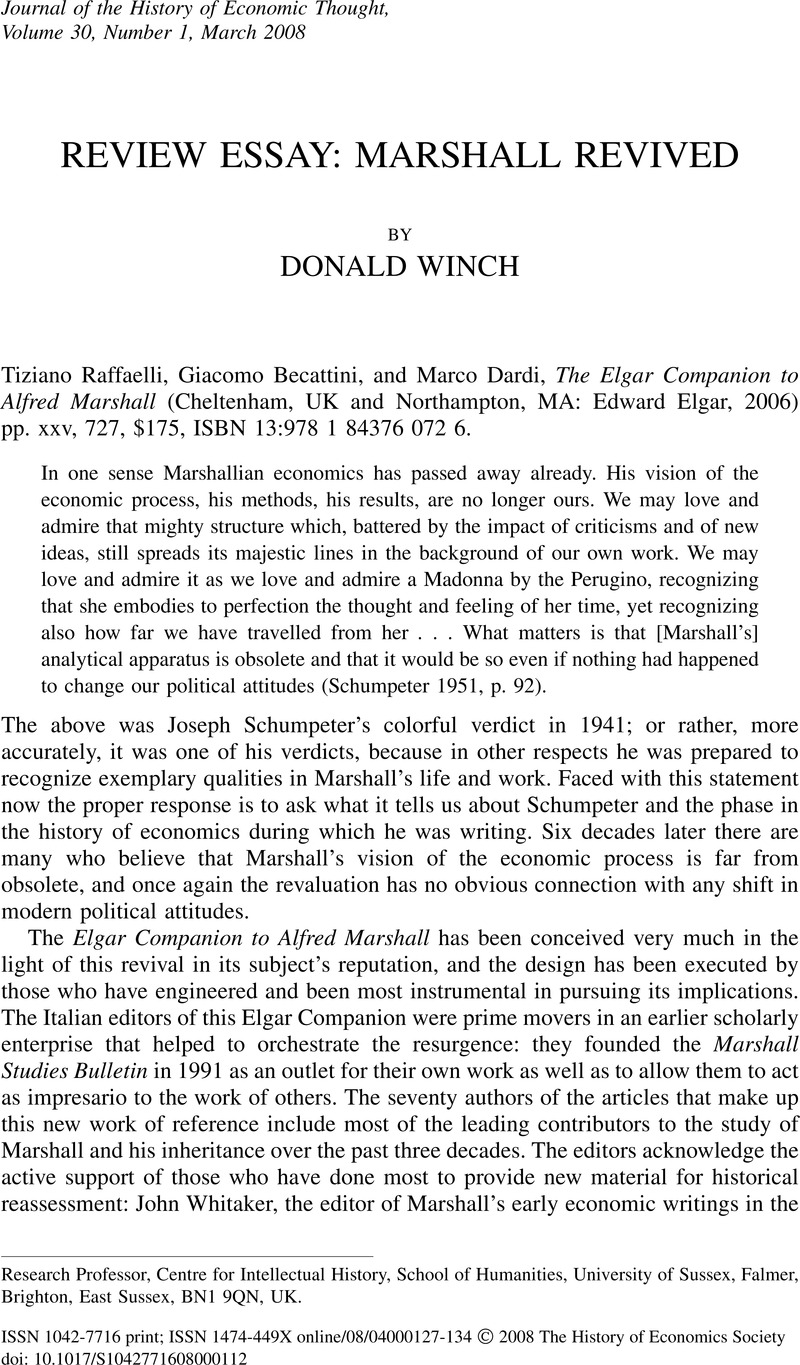Crossref Citations
This article has been cited by the following publications. This list is generated based on data provided by Crossref.
WINCH, DONALD
2010.
THE OLD GENERATION OF ECONOMISTS AND THE NEW: AN INTELLECTUAL HISTORIAN’S APPROACH TO A SIGNIFICANT TRANSITION.
Journal of the History of Economic Thought,
Vol. 32,
Issue. 1,
p.
23.
Chumbita, Joan Severo
2024.
Revisión de los fundamentos del desarrollo económico según Alfred Marshall: rendimientos crecientes a escala, competencia y demanda efectiva.
Ensayos de Economía,
Vol. 34,
Issue. 64,
p.
60.
Wang, Huan
and
Du, Liqun
2025.
Marshall’s economic organon: the One in the Many and the Many in the One.
Cambridge Journal of Economics,



